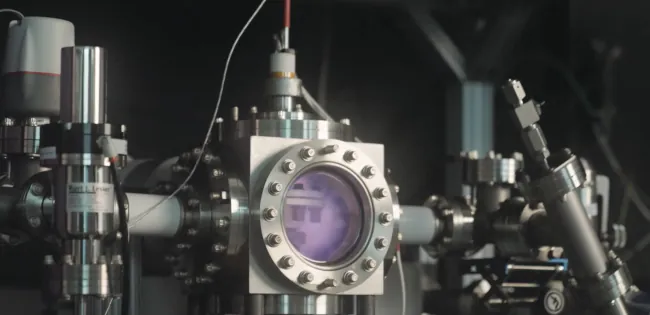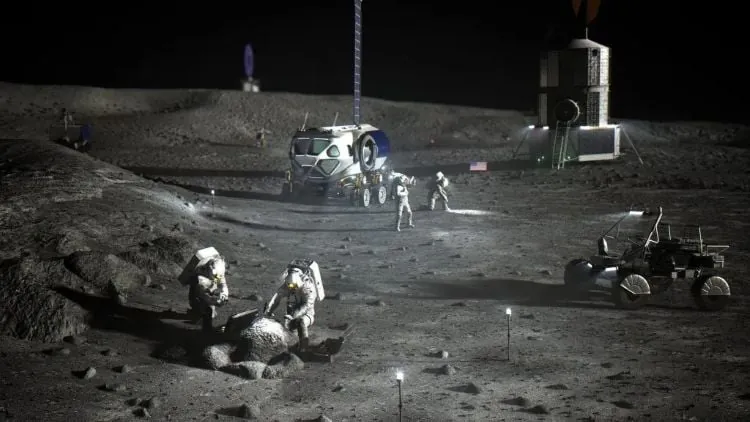
Revolutionary Breakthrough: Using Electrochemistry to Ignite Nuclear Fusion!
2025-08-20
Author: Sophie
Unlocking Fusion Potential at Room Temperature
In an exciting breakthrough, researchers at the University of British Columbia (UBC) have found a novel way to accelerate nuclear fusion rates using a much more accessible approach—electrochemistry. This method involves loading a solid metal target with deuterium fuel in a compact, bench-top reactor, marking a significant departure from traditional large-scale magnetic confinement fusion techniques.
How It Works: The Science Behind the Experiment
The researchers focused on a metal target made of palladium, which was infused with deuterium using two innovative methods. On one side, they applied a plasma field, while the other side involved utilizing an electrochemical cell. Professor Curtis P. Berlinguette, a leading figure in the study, likened the process to compressing fuel into a sponge, revealing that one volt of electricity could achieve what normally demands a staggering 800 atmospheres of pressure.
Modest Boost, Major Implications
Although this experiment did not yield net energy gain, it successfully increased fusion rates by an average of 15% compared to using the plasma field alone. This achievement represents the inaugural demonstration of deuterium-deuterium nuclear fusion through both plasma immersion ion implantation and electrochemical loading techniques.
A New Era for Fusion Science
Professor Berlinguette envisions this work as a significant step towards democratizing fusion research, moving it beyond the confines of large national laboratories and into smaller, more nimble research settings. By merging nuclear fusion with materials science and electrochemistry, this groundbreaking approach invites the wider scientific community to collaborate, refine, and innovate further.
The Ingenious Thunderbird Reactor
At the heart of this experiment lies the Thunderbird Reactor, a custom-designed particle accelerator featuring a plasma thruster, vacuum chamber, and electrochemical cell—all working harmoniously to enhance deuterium-deuterium nuclear fusion rates. This bench-top reactor could pave the way for more streamlined research in nuclear fusion.
Lessons from the Past
The path to this discovery is rich with history. The first instance of deuterium-deuterium nuclear fusion was recorded back in 1934. While earlier claims of cold fusion in the late '80s stirred controversy and skepticism, Professor Berlinguette's current work is built on rigorous scientific inquiry. Unlike those past experiments, this one focuses on measurable nuclear signatures like neutrons, providing tangible evidence of fusion.
Looking Ahead: The Future of Fusion Energy
With the fusion of atomic nuclei at the heart of stars like our Sun, nuclear fusion holds the promise of being a far cleaner and more potent energy source than nuclear fission. While this initial study is just a step, it lays the groundwork for future investigations that could one day revolutionize how we generate energy. Could this be the key to a sustainable energy revolution?









 Brasil (PT)
Brasil (PT)
 Canada (EN)
Canada (EN)
 Chile (ES)
Chile (ES)
 Česko (CS)
Česko (CS)
 대한민국 (KO)
대한민국 (KO)
 España (ES)
España (ES)
 France (FR)
France (FR)
 Hong Kong (EN)
Hong Kong (EN)
 Italia (IT)
Italia (IT)
 日本 (JA)
日本 (JA)
 Magyarország (HU)
Magyarország (HU)
 Norge (NO)
Norge (NO)
 Polska (PL)
Polska (PL)
 Schweiz (DE)
Schweiz (DE)
 Singapore (EN)
Singapore (EN)
 Sverige (SV)
Sverige (SV)
 Suomi (FI)
Suomi (FI)
 Türkiye (TR)
Türkiye (TR)
 الإمارات العربية المتحدة (AR)
الإمارات العربية المتحدة (AR)